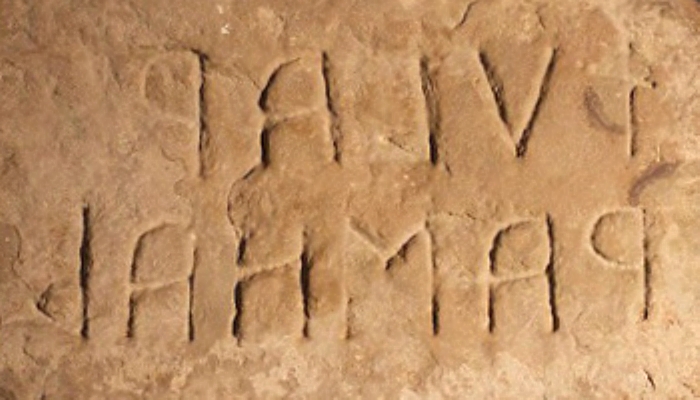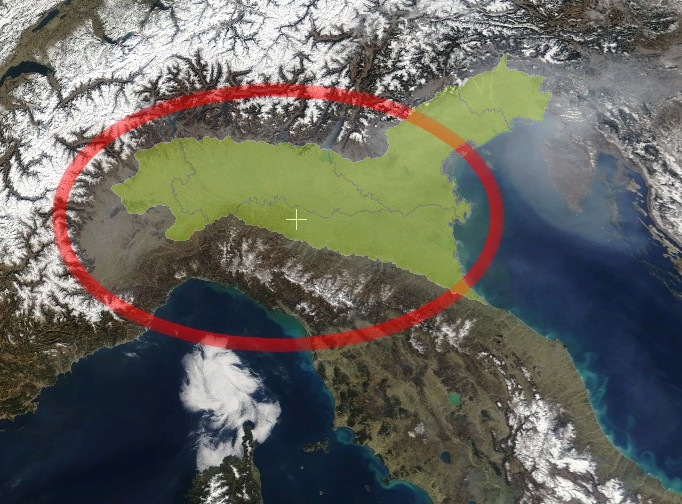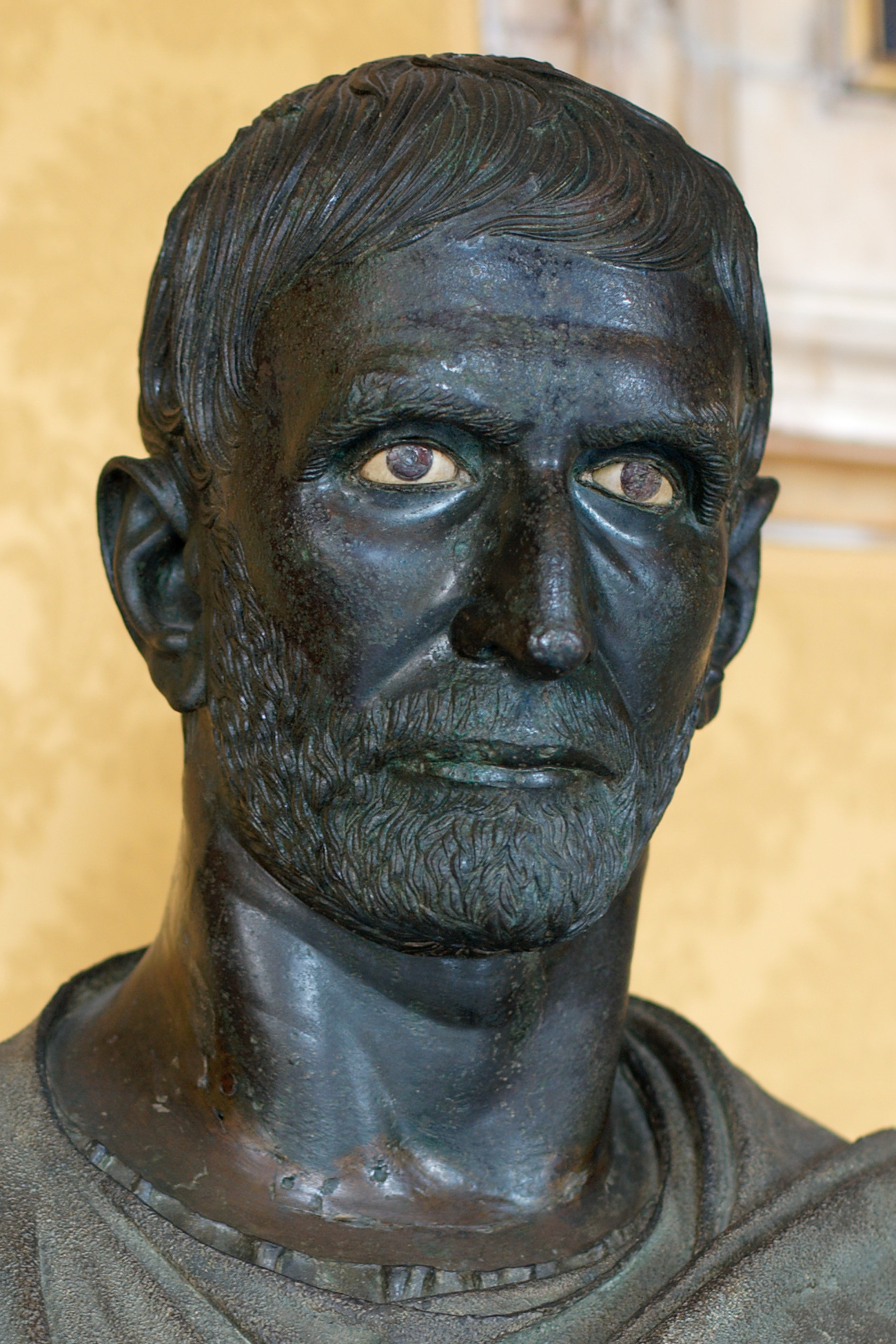|
Etruscan Civilization
The Etruscan civilization ( ) was an ancient civilization created by the Etruscans, a people who inhabited Etruria in List of ancient peoples of Italy, ancient Italy, with a common language and culture, and formed a federation of city-states. After adjacent lands had been conquered its territory covered, at its greatest extent, roughly what is now Tuscany, western Umbria and northern Lazio, as well as what are now the Po Valley, Emilia-Romagna, south-eastern Lombardy, southern Veneto and western Campania. A large body of literature has flourished on the origins of the Etruscans, but the consensus among modern scholars is that the Etruscans were an indigenous population. The earliest evidence of a culture that is identifiably Etruscan dates from about 900 BC. This is the period of the Iron Age Villanovan culture, considered to be the earliest phase of Etruscan civilization, which itself developed from the previous late Bronze Age Proto-Villanovan culture in the same region, p ... [...More Info...] [...Related Items...] OR: [Wikipedia] [Google] [Baidu] |
Iron Age
The Iron Age () is the final epoch of the three historical Metal Ages, after the Chalcolithic and Bronze Age. It has also been considered as the final age of the three-age division starting with prehistory (before recorded history) and progressing to protohistory (before written history). In this usage, it is preceded by the Stone Age (subdivided into the Paleolithic, Mesolithic and Neolithic) and Bronze Age. These concepts originated for describing Iron Age Europe and the ancient Near East. In the archaeology of the Americas, a five-period system is conventionally used instead; indigenous cultures there did not develop an iron economy in the pre-Columbian era, though some did work copper and bronze. Indigenous metalworking arrived in Australia with European contact. Although meteoric iron has been used for millennia in many regions, the beginning of the Iron Age is defined locally around the world by archaeological convention when the production of Smelting, smelted iron (espe ... [...More Info...] [...Related Items...] OR: [Wikipedia] [Google] [Baidu] |
Po Valley
The Po Valley, Po Plain, Plain of the Po, or Padan Plain (, , or ) is a major geographical feature of northern Italy. It extends approximately in an east-west direction, with an area of including its Venetian Plain, Venetic extension not actually related to the Po (river), Po basin; it runs from the Western Alps to the Adriatic Sea. The flatlands of Veneto and Friuli are often considered apart since they do not drain into the Po, but they effectively combine into an unbroken plain, making it the largest in Southern Europe. It has a population of 17 million, or a third of Italy's total population. The plain is the surface of an in-filled system of ancient canyons (the "Apennine Foredeep") extending from the Apennine Mountains, Apennines in the south to the Alps in the north, including the northern Adriatic. In addition to the Po and its affluents, the contemporary surface may be considered to include the Savio (river), Savio, Lamone (river), Lamone and Reno (river), Reno to the ... [...More Info...] [...Related Items...] OR: [Wikipedia] [Google] [Baidu] |
Roman Republic
The Roman Republic ( ) was the era of Ancient Rome, classical Roman civilisation beginning with Overthrow of the Roman monarchy, the overthrow of the Roman Kingdom (traditionally dated to 509 BC) and ending in 27 BC with the establishment of the Roman Empire following the War of Actium. During this period, Rome's control expanded from the city's immediate surroundings to hegemony over the entire Mediterranean Sea, Mediterranean world. Roman society at the time was primarily a cultural mix of Latins (Italic tribe), Latin and Etruscan civilization, Etruscan societies, as well as of Sabine, Oscan, and Greek cultural elements, which is especially visible in the Ancient Roman religion and List of Roman deities, its pantheon. Its political organisation developed at around the same time as direct democracy in Ancient Greece, with collective and annual magistracies, overseen by Roman Senate, a senate. There were annual elections, but the republican system was an elective olig ... [...More Info...] [...Related Items...] OR: [Wikipedia] [Google] [Baidu] |
Roman Kingdom
The Roman Kingdom, also known as the Roman monarchy and the regal period of ancient Rome, was the earliest period of Ancient Rome, Roman history when the city and its territory were King of Rome, ruled by kings. According to tradition, the Roman Kingdom began with the Founding of Rome, city's founding , with settlements around the Palatine Hill along the river Tiber in central Italy, and ended with the Overthrow of the Roman monarchy, overthrow of the kings and the establishment of the Republic . Little is certain about the kingdom's history as no records and few inscriptions from the time of the kings have survived. The accounts of this period written during the Roman Republic, Republic and the Roman Empire, Empire are thought largely to be based on oral tradition. Origin The site of the founding of the Roman Kingdom (and eventual Roman Republic, Republic and Roman Empire, Empire) included a ford (crossing), ford where one could cross the river Tiber in central Roman Italy ... [...More Info...] [...Related Items...] OR: [Wikipedia] [Google] [Baidu] |
Roman Empire
The Roman Empire ruled the Mediterranean and much of Europe, Western Asia and North Africa. The Roman people, Romans conquered most of this during the Roman Republic, Republic, and it was ruled by emperors following Octavian's assumption of effective sole rule in 27 BC. The Western Roman Empire, western empire collapsed in 476 AD, but the Byzantine Empire, eastern empire lasted until the fall of Constantinople in 1453. By 100 BC, the city of Rome had expanded its rule from the Italian peninsula to most of the Mediterranean Sea, Mediterranean and beyond. However, it was severely destabilised by List of Roman civil wars and revolts, civil wars and political conflicts, which culminated in the Wars of Augustus, victory of Octavian over Mark Antony and Cleopatra at the Battle of Actium in 31 BC, and the subsequent conquest of the Ptolemaic Kingdom in Egypt. In 27 BC, the Roman Senate granted Octavian overarching military power () and the new title of ''Augustus (title), Augustus'' ... [...More Info...] [...Related Items...] OR: [Wikipedia] [Google] [Baidu] |
Roman Citizenship
Citizenship in ancient Rome () was a privileged political and legal status afforded to free individuals with respect to laws, property, and governance. Citizenship in ancient Rome was complex and based upon many different laws, traditions, and cultural practices. There existed several different types of citizenship, determined by one's gender, class, and political affiliations, and the exact duties or expectations of a citizen varied throughout the history of the Roman Empire. History The oldest document currently available that details the rights of citizenship is the Twelve Tables, ratified 449 BC. Much of the text of the Tables only exists in fragments, but during the time of Ancient Rome the Tables would be displayed in full in the Roman Forum for all to see. The Tables detail the rights of citizens in dealing with court proceedings, property, inheritance, death, and (in the case of women) public behavior. Under the Roman Republic, the government conducted a census every fi ... [...More Info...] [...Related Items...] OR: [Wikipedia] [Google] [Baidu] |
Roman–Etruscan Wars
The Roman–Etruscan Wars, also known as the Etruscan Wars or the Etruscan–Roman Wars, were a series of wars fought between ancient Rome (in both the Roman Kingdom, regal and the Roman Republic, republican periods) and the Etruscan civilization, Etruscans. Information about many of the wars is limited, particularly those in the early parts of Rome's history, and in large part is known from ancient texts alone. The conquest of Etruria was completed in 265–264 BC. Periodisation Based on the traditional narrative of the overthrow of the Roman monarchy in 509 BC, in which the Romans ousted the Etruscan King of Rome, Tarquinii dynasty and established the Roman Republic, some historians put the start of the Roman–Etruscan Wars in 509 BC. Other historians such as Brice (2014) emphasise that little about the Etruscan Wars survives in the ancient sources: though "the general course of the war" could be discerned, it is impossible to reconstruct a continuous narrative. He argued ... [...More Info...] [...Related Items...] OR: [Wikipedia] [Google] [Baidu] |
Roman Expansion In Italy
The Roman expansion in Italy covers a series of conflicts in which Rome grew from being a small Italian city-state to be the ruler of the Italy (geographical region), Italian region. Roman tradition attributes to the Roman Kingdom, Roman kings the first war Rape of the Sabine women, against the Sabines and the first conquests around the Alban Hills and down to the coast of Latium. The birth of the Roman Republic after the Overthrow of the Roman monarchy, overthrow of the Etruscan monarch of Rome in 509 BC began a series of Roman–Etruscan Wars, major wars between the Romans and the Etruscans. In 390 BC, Gauls from the north of Italy Battle of Allia, sacked Rome. In the second half of the 4th century BC Rome clashed repeatedly with the Samnites, a powerful tribal coalition of the Apennine Mountains, Apennine region. By the end of these wars, Rome had become the most powerful state in central Italy and began to expand to the north and to the south. The last threat to Roman hege ... [...More Info...] [...Related Items...] OR: [Wikipedia] [Google] [Baidu] |
Urnfield Culture
The Urnfield culture () was a late Bronze Age Europe, Bronze Age culture of Central Europe, often divided into several local cultures within a broader Urnfield tradition. The name comes from the custom of cremation, cremating the dead and placing their ashes in urns, which were then buried in fields. The first usage of the name occurred in publications over grave sites in southern Germany in the late 19th century. Over much of Europe, the Urnfield culture followed the Tumulus culture and was succeeded by the Hallstatt culture. Some linguists and archaeologists have associated this culture with a Celtic languages, pre-Celtic language or Proto-Celtic language family.Peter Schrijver, 2016, "Sound Change, the Italo-Celtic Linguistic Unity, and the Italian Homeland of Celtic", in John T. Koch & Barry Cunniffe, ''Celtic From the West 3: Atlantic Europe in the Metal Ages: questions of shared language''. Oxford, England; Oxbow Books, pp. 9, 489–502. By the end of the 2nd millennium BC, ... [...More Info...] [...Related Items...] OR: [Wikipedia] [Google] [Baidu] |
Proto-Villanovan Culture
The Proto-Villanovan culture was a late Bronze Age culture that appeared in Italy in the first half of the 12th century BC and lasted until the 10th century BC, part of the central European Urnfield culture system (1300–750 BCE). History The proto-Villanovan culture was part of the central European Urnfield culture system. The similarity, in particular, has been noted with the regional groups of Bavaria-Upper AustriaM. Gimbutas ''Bronze Age Cultures in Central and Eastern Europe'' pp. 339–345 and of the middle-Danube. Furthermore, the Proto-Villanovan culture shows affinities with both the Lusatian and Canegrate cultures. Another hypothesis, however, is that it was a derivation from the previous Terramare culture of the Po Valley. The burial characteristics relate the Proto-Villanovan culture to the Central European Urnfield culture and Celtic Hallstatt culture that succeeded it. It is not possible to tell these apart in their earlier stages. Various authors, such as ... [...More Info...] [...Related Items...] OR: [Wikipedia] [Google] [Baidu] |
Culture
Culture ( ) is a concept that encompasses the social behavior, institutions, and Social norm, norms found in human societies, as well as the knowledge, beliefs, arts, laws, Social norm, customs, capabilities, Attitude (psychology), attitudes, and habits of the individuals in these groups.Tylor, Edward. (1871). ''Primitive Culture''. Vol 1. New York: J. P. Putnam's Son Culture often originates from or is attributed to a specific region or location. Humans acquire culture through the learning processes of enculturation and socialization, which is shown by the diversity of cultures across societies. A cultural norm codifies acceptable conduct in society; it serves as a guideline for behavior, dress, language, and demeanor in a situation, which serves as a template for expectations in a social group. Accepting only a monoculturalism, monoculture in a social group can bear risks, just as a single species can wither in the face of environmental change, for lack of functional respo ... [...More Info...] [...Related Items...] OR: [Wikipedia] [Google] [Baidu] |
Campania
Campania is an administrative Regions of Italy, region of Italy located in Southern Italy; most of it is in the south-western portion of the Italian Peninsula (with the Tyrrhenian Sea to its west), but it also includes the small Phlegraean Islands and the island of Capri. The capital of the region is Naples. Campania has a population of 5,575,025 as of 2025, making it Italy's third most populous region, and, with an area of , its most densely populated region. Based on its Gross domestic product, GDP, Campania is also the most economically productive region in Southern Italy List of Italian regions by GDP, and the 7th most productive in the whole country. Naples' urban area, which is in Campania, is the List of urban areas in the European Union, eighth most populous in the European Union. The region is home to 10 of the 58 List of World Heritage Sites in Italy, UNESCO sites in Italy, including Pompeii and Herculaneum, the Royal Palace of Caserta, the Amalfi Coast, the Longobardian ... [...More Info...] [...Related Items...] OR: [Wikipedia] [Google] [Baidu] |








